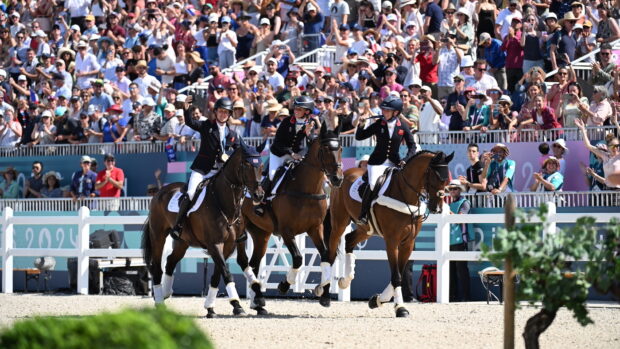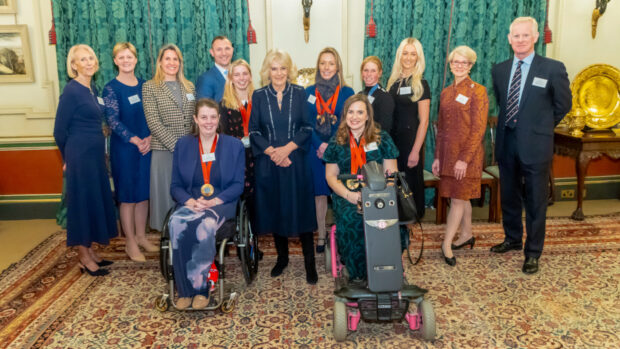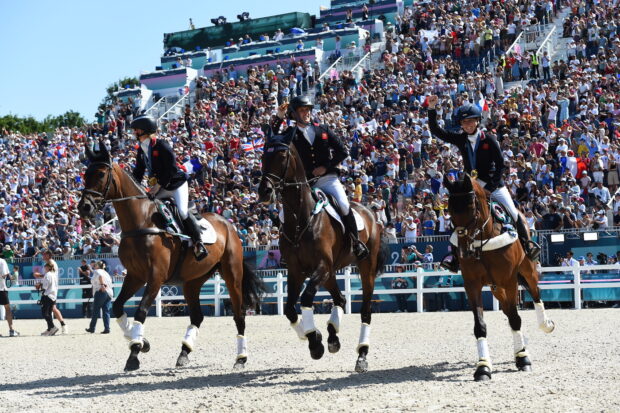The Paris Olympics equestrian venue for the 2024 Summer Games will be located in the historic grounds of the Palace of Versailles, 35km from the Olympic and Paralympic village.
Preparations are well underway, with a temporary 16,000-seat outdoor arena under construction at the UNESCO World Heritage Site.
The arena is located on the 12.85 acres of the Étoile Royale esplanade, adjacent to the Grand Canal, which runs along the main east-west axis of the Park of Versailles.
The Grand Canal itself was constructed between 1668 and 1679 and is renowned as one of the most famous works of André Le Nôtre, a prominent French landscape architect who was the principal gardener of King Louis XIV of France.
The arena will be bordered by three grandstands, with an open-ended section overlooking the Grand Canal and the palace facade, 3km to the east.
From 27 July to 11 August, and then again from 3–7 September 2024, it will host two Olympic eventing phases (dressage and showjumping), as well as the pure Olympic showjumping and Olympic dressage competitions, and dressage at the Paralympics.
The 5.3km Olympic eventing cross-country course will be held alongside the Grand Canal, while the five modern pentathlon disciplines will also take place at the Palace of Versailles.

The Paris 2024 equestrian events will be held at the Palace of Versailles.
There will be three warm-up areas, each subdivided into two to create a total of six arenas. A designated one-way system will be implemented for competitors navigating to and from the 10-minute box and exiting the competition arena, so there will be no horses crossing over in those final minutes.
“It’s really starting to come together,” said British Equestrian (BEF) performance director Helen Nicholls following a recent visit. “This is going to be a really special moment for equestrianism. Even with no one there, it looked spine-tinglingly good.”
Horses will be allocated stables based on their discipline rather than their country of origin, and strict arrival and departure schedules will be enforced.
Event horses will be the first to arrive on 24 July, with dressage horses following suit on 26 July. Event horses will depart on 29 July, allowing for the disinfection of their stables before the arrival of the showjumpers the next day. It has been organised this way to prevent disturbance on each group of horses as the others are coming or going.
“In these 11 days of competition, the principle in mind has always been the welfare of the horse,” said FEI Secretary General Sabrina Ibañez . “That is why they have the stabling by discipline and not by national federation, it’s bearing in mind the mental state of our horses as well.”
After the Games, all temporary structures necessary for hosting the competitions will be dismantled, and the grounds will be returned to their original state, as part of the organisers’ ongoing environmental commitments.
As a lasting legacy of the event, there will be a comprehensive restoration of the Royal Gate to its original layout, featuring two distinct gates positioned along the main and secondary pathways of the Étoile Royale. Situated on the Western perimeter of the estate, this structure will serve as the designated entrance for athletes and horses throughout the Games.
Historic Versailles: the Paris Olympics equestrian venue
Horses are synonymous with Versailles. During the Ancien Régime, daily life at Versailles centred on horses and their multifaceted roles, encompassing entertainment, warfare, and transportation.
Indeed, the roots of Versailles lie in the House of Bourbon’s love of hunting. Louis XIII was so enamoured with the forests of Versailles that in 1623, he ordered the construction of a modest hunting lodge that would later be transformed by Louis XIV into the Versailles we know today. His predecessors were also enthusiastic hunters, going out between 150 and 180 times a year.

The Palace of Versailles, with the Apollo Fountain in the foreground, which sits between the Grand Canal and the palace. The Paris 2024 Olympic and Paralympic equestrian venue will be located at the far end of the canal, with views up towards this aspect.
The royal stables were among the most important departments of the King’s Household. The Great Stables and Small Stables were built between 1679 and 1683, with Great Stables being administered by the Grand Écuyer de France and the Small Stables fell under the authority of the Premier Écuyer.
The Grand Écuyer was responsible for saddle horses, trained for hunting and war while the Premier Écuyer was in charge of all other mounts, such as coach horses.
Court society emphasised the significance of equestrian culture. The King had to showcase his horsemanship as a symbol of his governing prowess and the image of the King as a skilled horseman was a vital aspect of the royal identity, depicted through various art forms and literature.
Horses remain an important part of Versailles’ visual culture and sculptures – such as the restored statues of Apollo’s Fountain – are displayed prominently across the palace grounds.
As part of the Olympic programme, there will be a special exhibition dedicated to horses and equestrian culture in Europe between the 16th and 20th centuries from 2 July to 3 November 2024, as well as a series of tours and programmes that connect equestrian sports and the arts.
You might also be interested in:

‘Spine-tinglingly good’: Paris Olympics to be a ‘really special moment’ for horse sport

Horses gallop across Versailles’ Grand Canal pontoon in ‘hugely exciting’ Paris Olympics test

Find somewhere to stay near Versailles for the Paris Olympics and Paralympics

Subscribe to Horse & Hound magazine today – and enjoy unlimited website access all year round
Horse & Hound magazine, out every Thursday, is packed with all the latest news and reports, as well as interviews, specials, nostalgia, vet and training advice. Find how you can enjoy the magazine delivered to your door every week, plus options to upgrade your subscription to access our online service that brings you breaking news and reports as well as other benefits.






